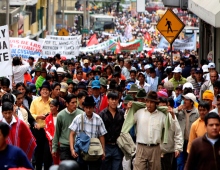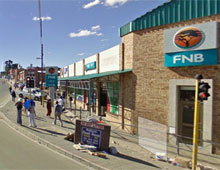On 3 October, President of Ecuador, Lenín Moreno signed decree 883, ending the gasoline and diesel subsidy, which essentially doubled the price of fuel in the country. Moreno insisted these economic measures would safeguard the dollarization of the Ecuador economy but it has had dire consequences for the citizens of the country. After weeks of protests, that highlighted deep inequality in the Ecuadorian economy, the neoliberal government was forced to repeal decree 883. But the lessons live on for other developing nations.
Decree 883 would have led to the release of fuel prices, which impacts the cost of living of the population including indigenous communities, the elimination of import taxes and tax reform that favours tax evasion. The political move sparked outrage and the last few weeks have seen a historic popular uprising in Ecuador, described by Guillaume Long, former foreign minister for Ecuador as “the biggest mobilisation in contemporary Ecuadorian history” led by indigenous groups and which has forced Moreno to flee the capital and declare a national emergency.
According to a report by Open Democracy, seven people have been killed, 1 340 injured and 1121 have been detained. Furthermore, there have been 108 injured police officers and 115 journalists have been attacked. Social organisations and the media have reported the remnants of 12-calibre ammunition, pellets, stun grenades, tear gas, pepper gas, and rubber bullets on the streets of the capital.
It was reported last week that a deal was reached to revoke Decree 883, drop IMF measures and stop the nationwide strike. But the story goes far deeper and it’s the IMF’s structural adjustment programme that really needs reform.
Structural adjustment programmes consist of loans provided by the International Monetary Fund (IMF) and the World Bank to countries that experience economic crises. But these structural adjustment programmes require countries borrowing money to implement certain policies in order to obtain new loans, or to lower interest rates on existing ones. These clauses attached to the loans have been widely criticised due to their negative effects on the social sector.
Furthermore, structural adjustment programmes often trap borrowing governments in structural insolvency rather than provide fiscal stimulation of depressed economies.
Peter Koenig, an economist and geopolitical analyst recently wrote that for the past four decades the IMF has “weaponised its handle on the western economy through the dollar-based western monetary system, and brutally destroyed nation after nation” killing hundreds of thousands of people indirectly through financial instruments like economic strangulation, preventing indispensable medical equipment and medication entering a country and preventing food from being imported, or being imported at prices that only the wealthy can afford.
The dollarized Ecuadorian economy had detrimental effects and allowed the United States, via the IMF to take full control of the Ecuadorian economy, by 100% dollarizing it.
Koenig further writes that the IMF instituted dollarization of the Ecuadorian economy in order to combat inflation and to bring about economic stability and growth. In January 2000, then President Jorge Jamil Mahuad Witt declared the US dollar as the official currency of Ecuador, replacing their own currency, the Sucre.
According to Sam Wang, a research associate at the Council on Hemispheric Affairs, the decision to dollarize the economy slowed hyperinflation, stopped the free fall of the Sucre, and stabilized the financial market, all of which significantly helped resolve the economic crisis. But the structural adjustment programmes imposed by the United States and the IMF also imposed cuts in social spending on health, education, childcare and increased fuel prices. There were also cuts in workforce numbers including as many as 140,000 public sector workers.
The impact of the IMF loan of US$ 4,2 billion to Ecuador has been detrimental and has “allowed Moreno to apply neoliberal policies, all those that usually come as draconian conditions with IMF loans and that eventually benefit only a small elite in the country – but allows western banking and corporations to further milk the countries social system,” wrote Koenig.
In 2018 the European Network studied 26 countries that received IMF loans, of which in 20 countries the people had taken to the streets. Since then the people of Argentina, Czech Republic, Egypt, Haiti, Jordan, Morocco, Pakistan, Sudan, Tunisia, to name a few, took to the streets against structural adjustment programmes. Their reasons were simple: Either protest or starve!
We can see how these policies have affected our own economy in South Africa, led by our own ANC led government.
The ANC-led neoliberal government dumped the Reconstruction and Development Programme, which aimed to stimulate the economy through increased demand for materials, and imposed the Growth, Employment and Redistribution (GEAR) strategy, the Accelerated and Shared Growth Initiative – South Africa (ASGISA) and the National Development Plan (NDP), which focused on supply-side economics. The original sin of the new ANC government was to break its electoral agreement with its constituency regarding the Reconstruction and Development Programme, which was the mandate given by the ANC constituency to the leadership to implement when it had ascended to the Union Building on April 27, 1994.
The basic assumptions of the Reconstruction and Development Programme was demand-side economics, which would have created a developmental state to uplift the masses from physical and mental poverty. This included a mass infrastructure programme led by the government which would create short-term employment and stimulate the manufacturing industry for sustainable employment. The programme would revolve around social housing, electricity, water, sewage, schools, hospitals, universities, shopping facilities, roads, bridges – to mention a few, including a wide distribution of social and individual wages to the urban and rural poor. These would create demands for consumer goods and other goods that would have stimulated the stagnant national and local economies.
But the ANC leadership reneged on this mandate and allowed the IMF to impose the opposite supply-side economics, the Growth, Employment and Redistribution strategy. Its basic assumption was: a private sector-led growth in the extractive economy for export to the USA and Europe. The extracted minerals would be beneficiated there and then imported as finished goods at exorbitant prices by South Africa.
On 16 October, IOL reported that the International Monetary Fund lowered South Africa’s economic growth forecast for 2019 by 0.5 percentage points, from 1.2 percent forecast in April to 0.7 percent, as global growth also slowed down.
During a time of neo-liberal economics and deepening inequality, the win for the workers in Ecuador speaks volumes to the need for social movements to stand up against repressive economic practices. Since the uprising in Ecuador, the government and the Indigenous movement agreed to meet for discussions, mediated by the United Nations and the Ecuadorian Episcopal Conference. It was during these talks that the neoliberal government surrendered as Moreno was forced to repeal decree 883 but the fight against the government and the IMF is far from over.










